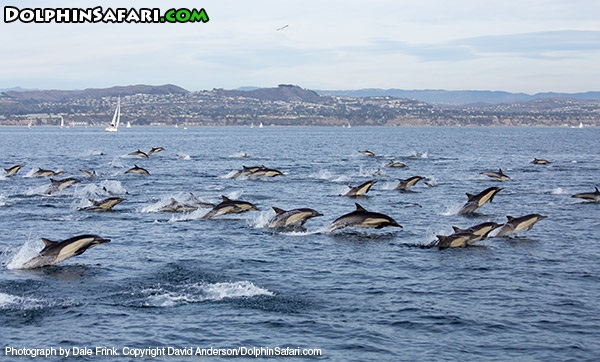Environmental Impacts
The common dolphin (Delphinus
delphis) is a very important organism in the marine ecosystem.
There are many conservative efforts in place globally to protect
these important marine mammals, but there are many types of human
interactions that have negatively impacted the common dolphin as
well.
 Some of the factors that have
produced a decline in the common dolphin population are overfishing,
bycatch, pollution, degradation of water quality, and climate
change. Overfishing is by far the most detrimental to
Delphinus delphis (Jackson
et al. 2001). Although
bycatch and pollution can directly hurt the common dolphin, most of
these harmful factors negatively impact the common dolphin
indirectly through the depletion and dispersal of its prey (Bearzi
et al. 2003). Delphinus
delphis diet consists mainly of schooling pelagic fish like
anchovies and sardines, which are commonly targeted by fisheries
globally.
Some of the factors that have
produced a decline in the common dolphin population are overfishing,
bycatch, pollution, degradation of water quality, and climate
change. Overfishing is by far the most detrimental to
Delphinus delphis (Jackson
et al. 2001). Although
bycatch and pollution can directly hurt the common dolphin, most of
these harmful factors negatively impact the common dolphin
indirectly through the depletion and dispersal of its prey (Bearzi
et al. 2003). Delphinus
delphis diet consists mainly of schooling pelagic fish like
anchovies and sardines, which are commonly targeted by fisheries
globally.
The decreased population of
sardines and anchovies from fisheries result in increased
competition between dolphins, sea birds, swordfish, hake, and tuna
(Piroddi et al. 2011). This competition produced a decline from 150 to 15
common dolphins that were studied (Piroddi
et al. 2011). Therefore,
fisheries hurt the common dolphin through an indirect route through
the food web. According to a study conducted by Laura Mannocci, over
1000 dolphins are bycaught each year in the Northeastern Atlantic
Ocean alone (Mannocci et al.
2012).
 Bycatch is a mistake made during commercial fishing, where
the wrong species of animal is captured unintentionally. This study
found that as a result of bycatch at its current pace,
Delphinus delphis could
decrease in population by 80% in 30 years and become extinct in 100
years in the eastern North Atlantic (Mannocci
et al. 2012).
Bycatch is a mistake made during commercial fishing, where
the wrong species of animal is captured unintentionally. This study
found that as a result of bycatch at its current pace,
Delphinus delphis could
decrease in population by 80% in 30 years and become extinct in 100
years in the eastern North Atlantic (Mannocci
et al. 2012).
When analyzing global climate change as it relates to ecology, it is important to realize that climate change most prominently affects the common dolphin by disrupting the food web in the dolphin’s marine habitat (Bearzi et al. 2003). The dolphin species themselves are very resistant to many different habitats and temperatures of water, however their prey are not always as resistant. Human pollution can have a direct effect on the common dolphin. The role of toxic pollutants called polychlorinated biphenyls (PCBs) is causing widespread immunosuppression and reproductive problems through biomagnification in the tissues of the Delphinus delphis (Bearzi et al. 2003). These PCB’s are the result of manmade chemicals.
To look at the life cycle of the common dolphin go to History and Reproduction
You Lost? Home
